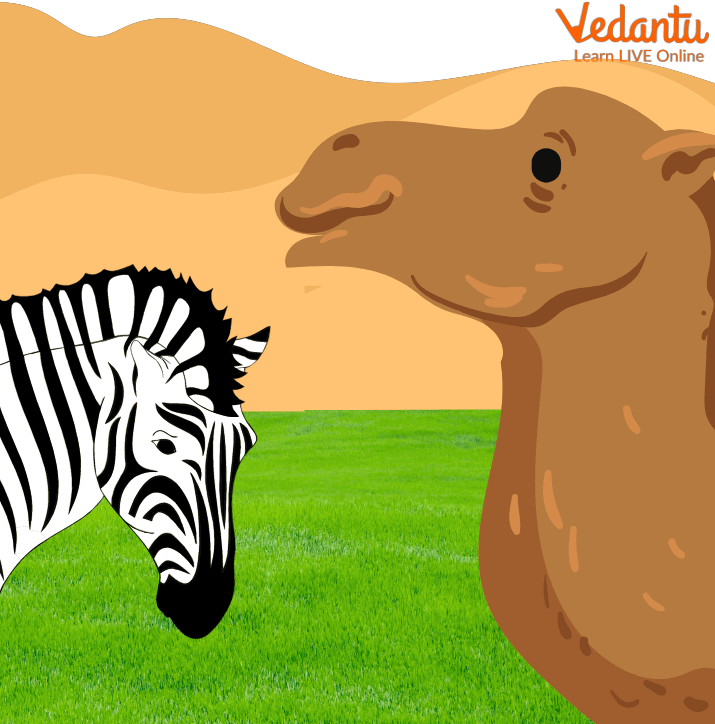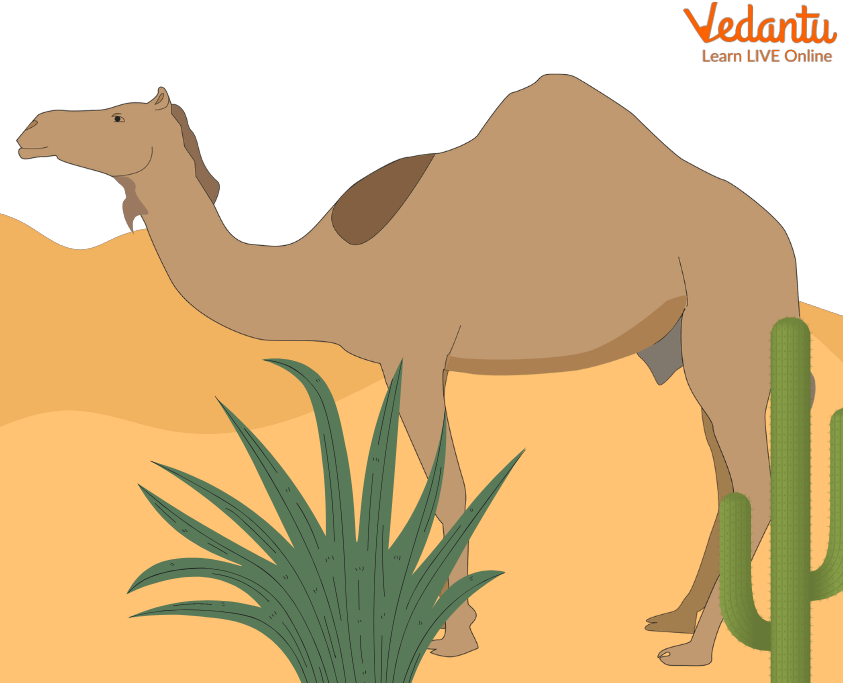The Story of the Camel and the Zebra – One of the Best Camel Stories

Did you know that camels are amazing creatures that can survive easily in the deserts? They can live without water for days, even up to a month. Their hump is their secret to this ability. Let us dive into this amazing story where we’ll learn why the camel looks the way it does and why these looks are important for the camel to survive in unfavourable conditions.
The Camel and the Zebra Story
There was once a jungle where two animals were great friends – a camel and a zebra. Although these two animals were very different from each other, they were known to be best friends. However, the zebra thought of itself as very glamorous with its black and white coat, and it thought of the camel as an ugly creature with humps, weird feet, ugly eyelashes, and so on. One day, the camel asked the zebra to come and play with him in the mud, to which the zebra replied with a no. He said that his beautiful black and white coat will get dirty. The camel was sad at this and he played in the mud alone and sat there thinking why the zebra was ignoring him.

The Camel and the Zebra
In a few days, there came a sudden drought. All the water in the forest started drying up. The tortoises complained about the water shortage in the lakes too, from which all animals would drink everyday. This made the zebra very worried. He saw a donkey carrying water buckets on his back and asked him if he could give him some water. The donkey was hesitant because he needed the water for himself. The zebra was feeling lost and went to his best friend, the camel. The camel said that he could take him to an oasis since camels have a strong sense of smell, which they can use to smell out oases.

Camel’s Hump
The zebra was surprised at the calmness of the camel in such a tough situation. This is when the camel revealed that the ugly thing that the zebra didn’t like on the camel’s back was his hump, which was a store of water. He said that he could use this water to survive for weeks, even a month. He also mentioned the hooves that allow him to walk through the hot sand in the desert. The zebra was upset that he did not have such hooves to give him comfort while walking in the scorching heat. The camel’s skin was thick and protected him from sandstorms and heat, and his eyelashes also helped him keep his eyes protected during such storms. The camel did not hesitate to help his friend and keep the zebra covered under him during the sand storms. The zebra was very thankful to his friend, the camel, for his help, and he realised that not all ugly things are useless. They again started playing together happily after the drought was over.
Conclusion
The camel may look ugly to some, but its physical features are the things that support him through the harshness of the desert and other obstacles that come along. It must therefore be remembered that not all beautiful things are useful in times of need, and not all ugly things should be looked down upon. They might just come in handy, you never know!


FAQs on The Story of the Camel and the Zebra – One of the Best Camel Stories
1. What is the moral of this story about the camel and the zebra?
The story about the camel and the zebra teaches us that things are not always as they seem. The zebra’s beautiful, black, and white coat may seem great, but it would not save him during the drought whereas the camel’s hump, eyelashes, and hooves might have seemed ugly, but they were able to save him and his friend during a time of need.
2. What is the use of the camel’s hump?
The camel’s hump is a great store of water. The camel uses this water to survive for up to a month when there is a shortage of water outside.




